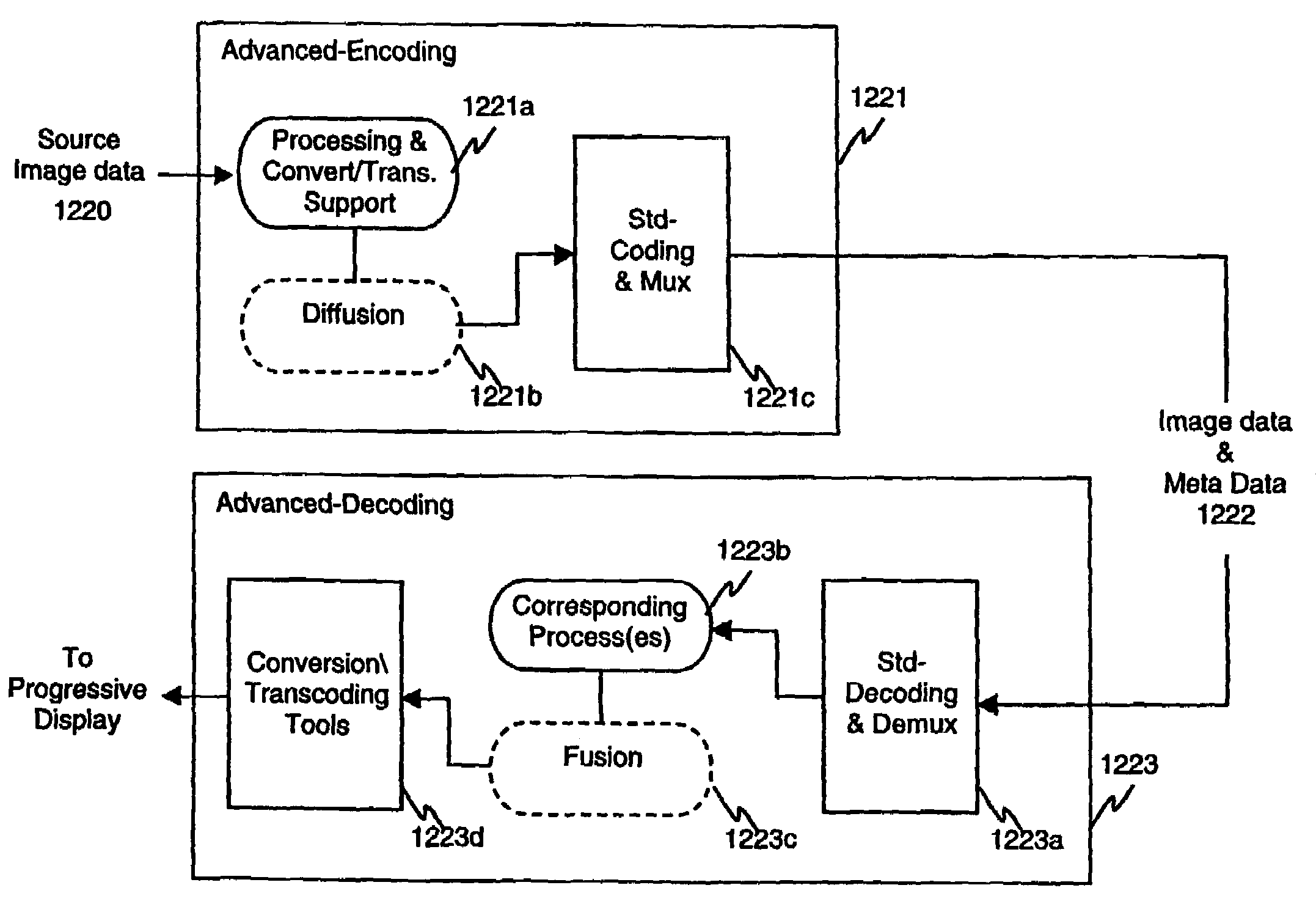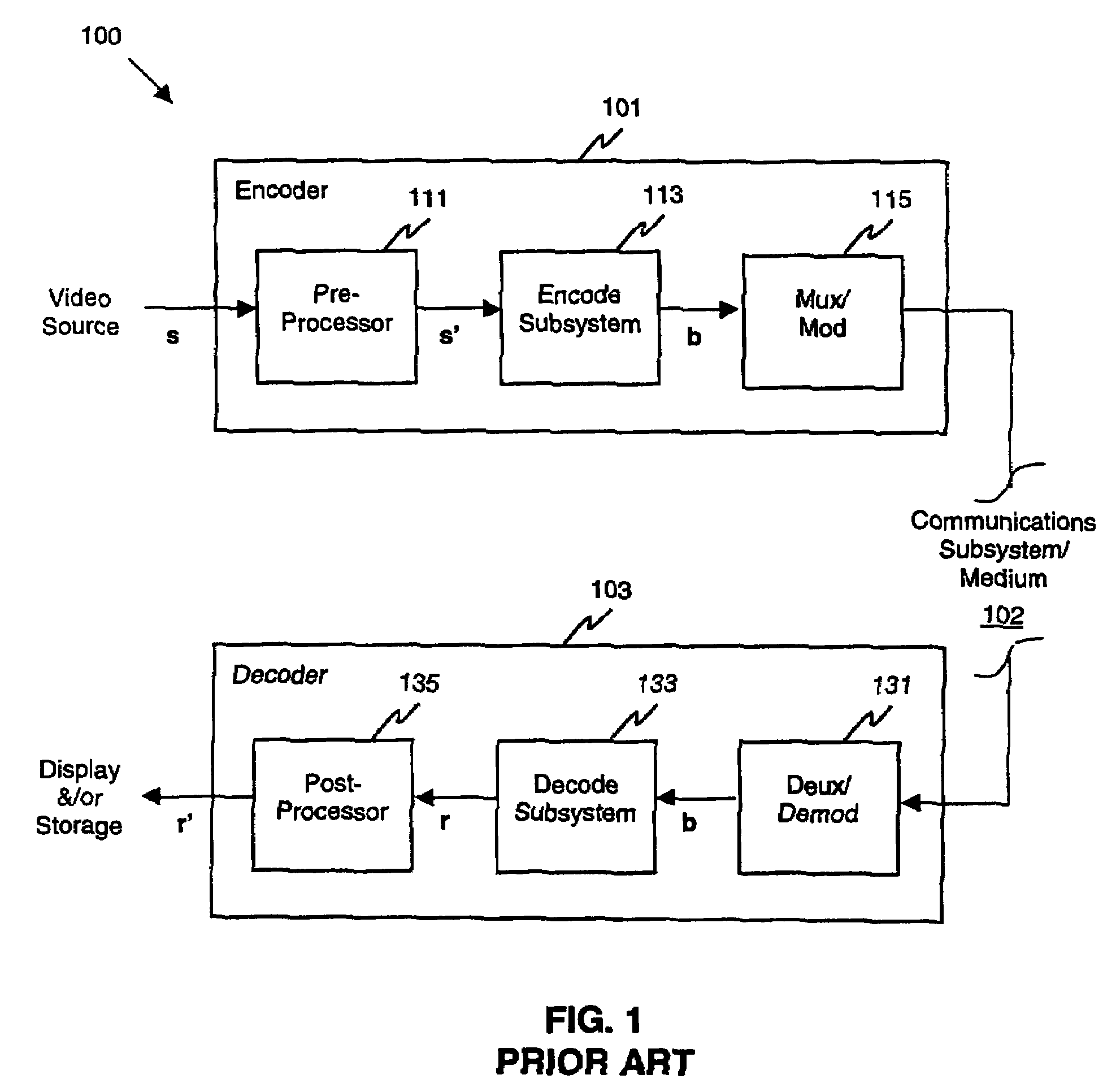Video coding reconstruction apparatus and methods
a video coding and reconstruction technology, applied in the field of digital video, can solve the problems of increasing the difficulty of coding, affecting the quality of video coding, so as to achieve efficient and precise functionality, reduce the bitrate and/or other improvement, and improve the effect of operation
- Summary
- Abstract
- Description
- Claims
- Application Information
AI Technical Summary
Benefits of technology
Problems solved by technology
Method used
Image
Examples
Embodiment Construction
[0077]In accordance with the present invention, it is discovered that determinable quality images and / or image components can be provided in a manner that is not only standard-compliant, but that is further capable of rendering current and future standards and implementation investments more adaptable, scalable and efficient. The invention also enables modification of the results achievable in conjunction with standard-compliant coding, including quality determination, and with little or no net increase, or even a decrease in bitrate and bandwidth requirements. Among other aspects of the invention, such capability is preferably facilitated by superimposed direct optimization, multi-dimensional, redundancy determination, creation and / or utilization, a super-domain model and / or multi-dimensional diffusion-type processing in conjunction with receipt of digital image data and / or other information.
[0078]Many aspects of the invention can be more easily viewed as modifiable, replaceable an...
PUM
 Login to View More
Login to View More Abstract
Description
Claims
Application Information
 Login to View More
Login to View More - R&D
- Intellectual Property
- Life Sciences
- Materials
- Tech Scout
- Unparalleled Data Quality
- Higher Quality Content
- 60% Fewer Hallucinations
Browse by: Latest US Patents, China's latest patents, Technical Efficacy Thesaurus, Application Domain, Technology Topic, Popular Technical Reports.
© 2025 PatSnap. All rights reserved.Legal|Privacy policy|Modern Slavery Act Transparency Statement|Sitemap|About US| Contact US: help@patsnap.com



